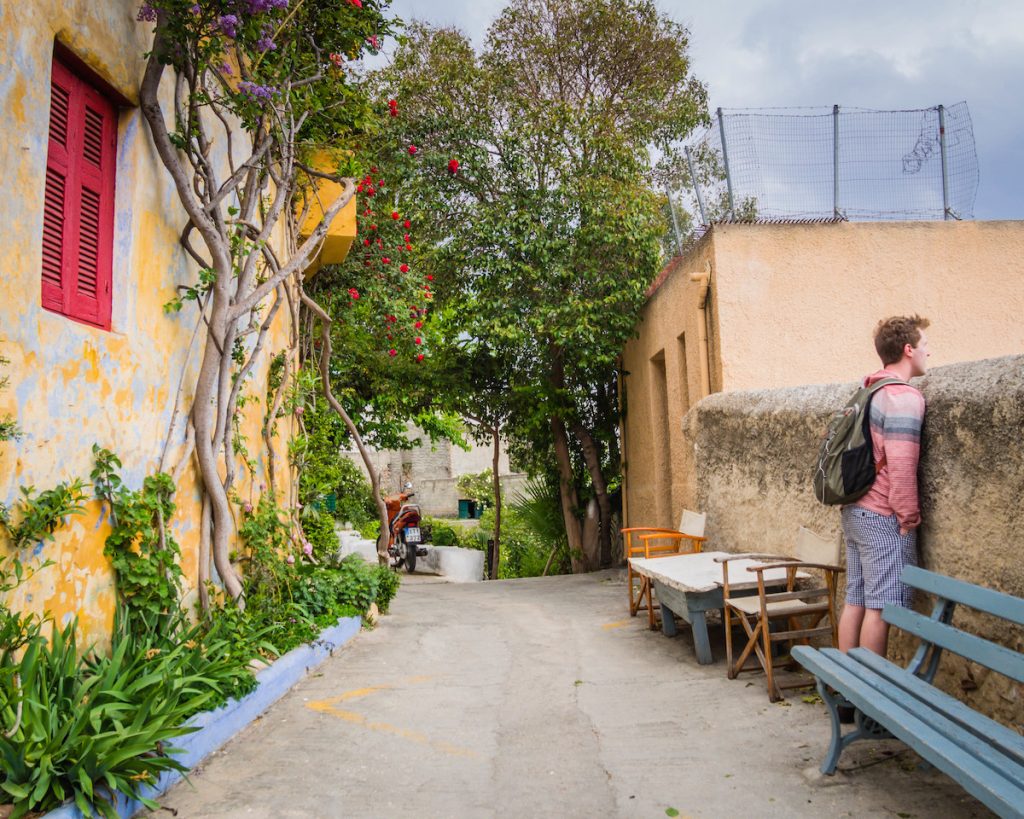Athens locals know you don’t actually need to go all the way to Santorini for a chance to stroll amongst postcard-perfect white-washed houses. In fact, you don’t even need to leave the center of the city. Easy to miss, but located right smack in the heart of Athens is the tiny neighborhood Anafiotika, a beautiful niche unlike any other with a fascinating history to match.
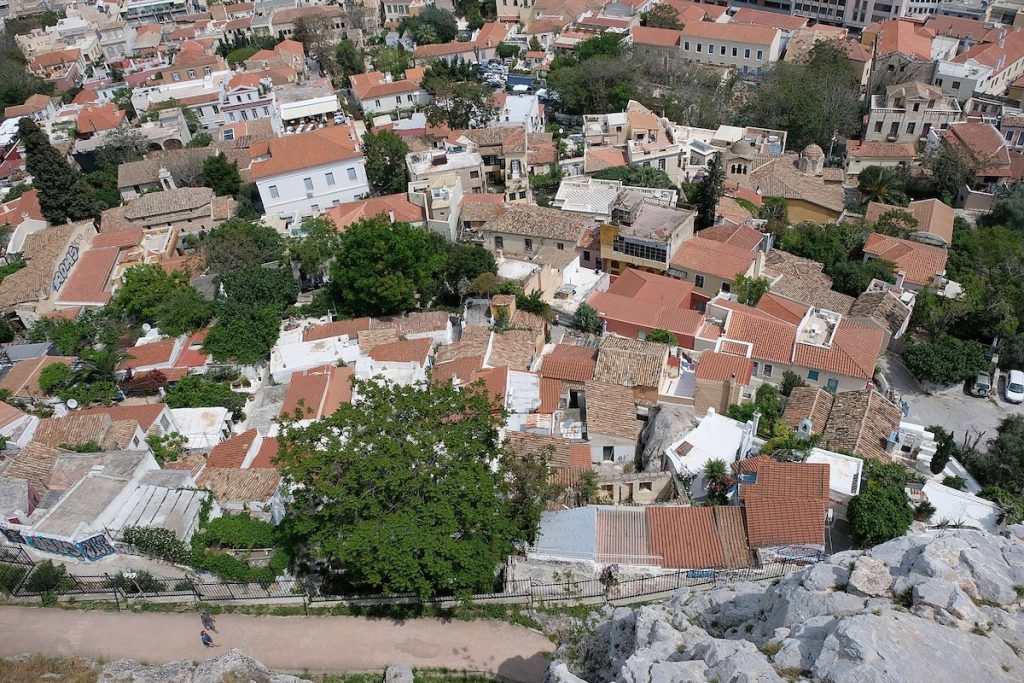
Everything you need to know about Anafiotika
Read along to learn about this charming little corner of Athens, and why you should visit. And once you’re done exploring here, why not check out our guide to exploring one of Athens’ oldest neighborhoods, Plaka?
Anafiotika: The island village in the center of Athens
Anafiotika is located right under the rock of the Acropolis, right above the neighborhood of Plaka.
Some initial fun facts about this part of the Greek capital:
- The streets are unnamed hand-cobbled footpaths that weave around the closely-clustered buildings.
- The houses themselves are little white-washed cubes topped with terracotta roofs withbright blue or red doors and windows surrounded by planters blossoming with flowers and succulent plants.
- Unlike the bustling center of Syntagma or Monastiraki, Anafiotika has no shops, no cafes, no tavernas, and looks like a remote island village–and there’s a reason why.
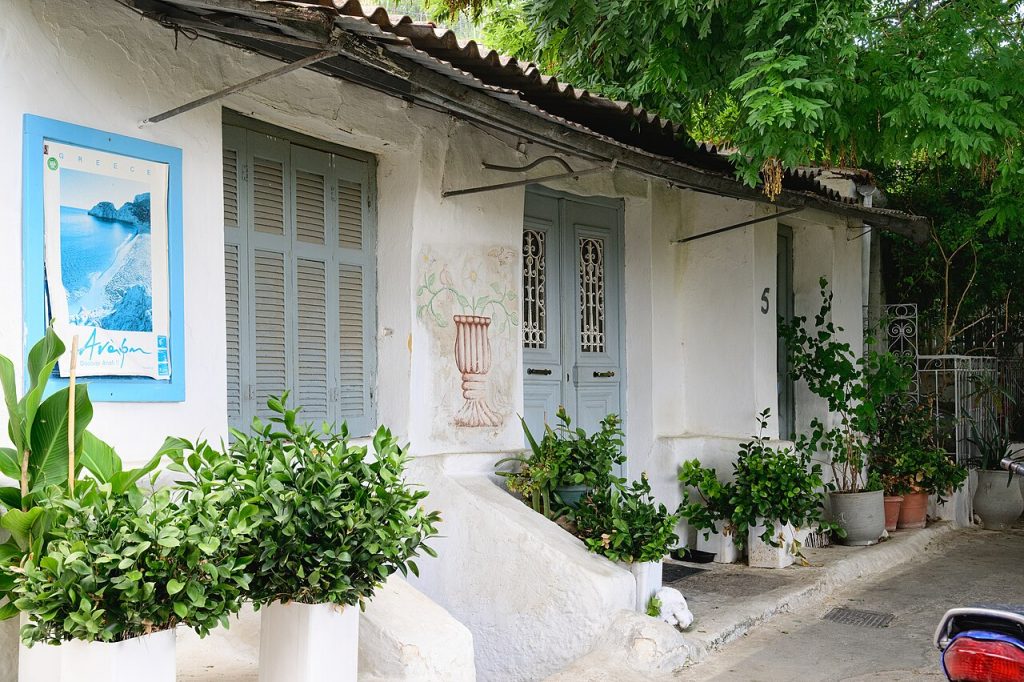
Traveler’s tip: Anafiotika is so close to the Acropolis that it’s a great area to have lunch or dinner after exploring the iconic landmark. And if you’re planning your trip, make sure to check out our 9 tips for visiting the Acropolis.
A neighborhood built overnight
In the 1840s expert masons, stone-workers, and builders from the Cycladic island Anafi signed on to construct a royal palace for the new King Otto and to help excavate archaeological sites around the Acropolis. A law at the time stated that if you erected a building between sunset and sunrise, the property was yours. So working at night, using the traditional Cycladic building methods they had grown up with, these builders fashioned their homes right below the monument they were excavating by day. The new locals called their neighborhood Anafiotika, which means “Little Anafi”.
Anafiotika may look trapped in time, but it has seen many changes in the almost 200 years since its founding. In the 1950s, the city destroyed many of the houses to make way for archaeological excavations, and then in the 1970s dozens more houses went down when the Greek government began a project to buy them up from the owners. Today around 45 of the stucco-white houses remain.
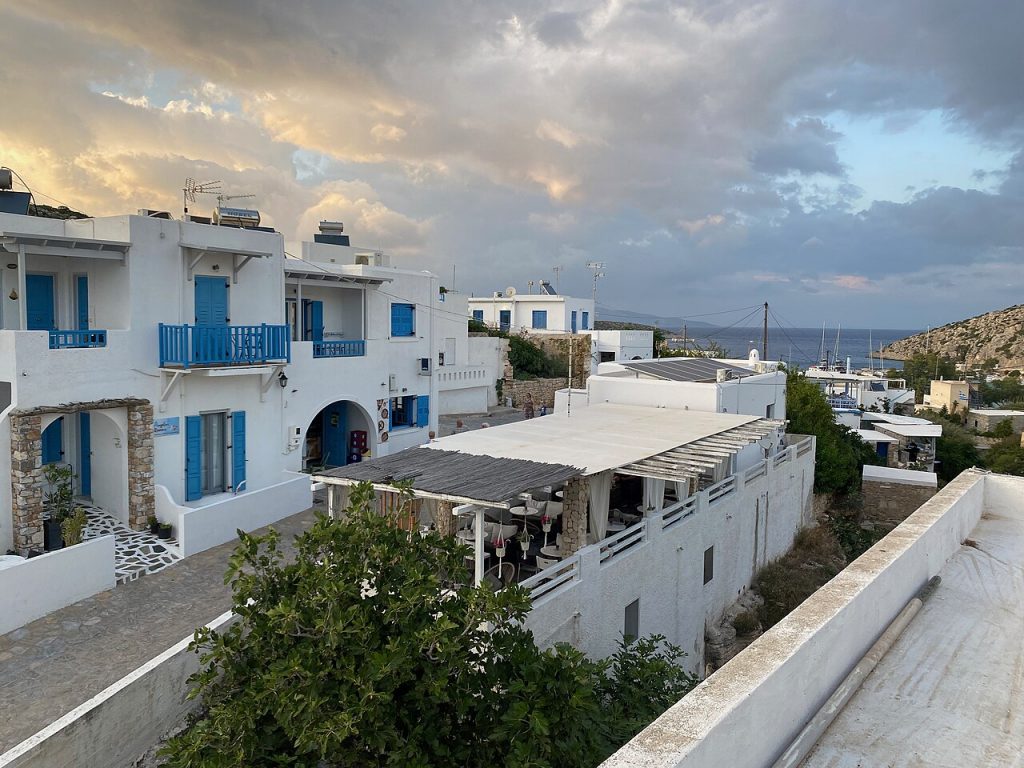
Believe it or not, today most of these little houses are still owned and lived in by descendents of those original builders. For years the children of the neighborhood would play on the Acropolis, and many of the Anafiites worked in the gas factory in the nearby neighborhood of Gazi. This meant that Anafiotika was one of the first neighborhoods of Athens to have a gas supply in the 1940s.
Laws have been put in place such that owners can only leave the houses to other relatives or sell them to the government, keeping the quiet historical character of the neighborhood intact.
Byzantine churches right under the Acropolis
Anafiotika also has several Byzantine churches worth taking a look at. There is the Church of the Metamorphosis Sotiros or the Transfiguration of Christ, built in the 11th-century. It far predates the Anafiotika settlement and they partially carved it into the rock of the Acropolis. There is the 17th century Church of St. George of the Rock which still operates today.
On the Saturday of Easter week, the Monastery of the Holy Sepulchre hosts the holy flame carried from Jerusalem. Finally, there is the Agios Simeon church, built in the style of a church in Anafi, which is filled with frescos and has an icon of the Virgin Mary of Kalamiotissa.
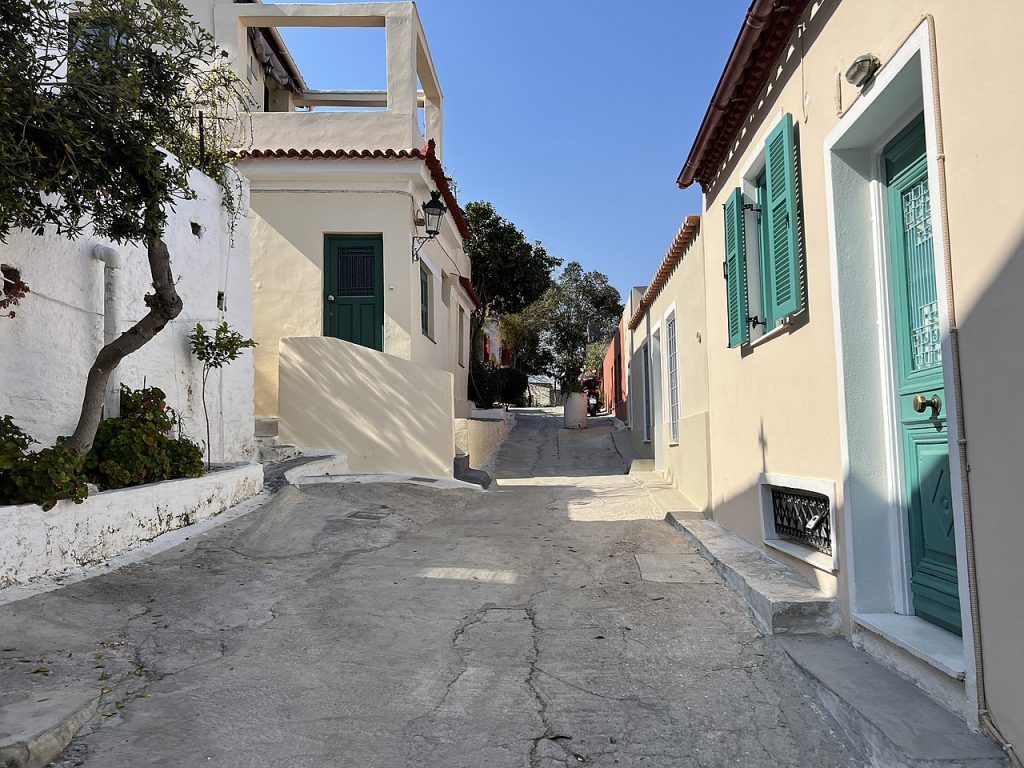
But Anafiotika, above all, remains a residential neighborhood. When you visit, make sure not to shout or to stick your head through any windows– you don’t want to interrupt someone in their living room. Instead, enjoy the peaceful island feeling and the unique winding alleyways. Then, before you leave, snap a pic of the view.
We love visiting Anafiotika around sunset. Its elevated position gives a breathtaking view of Athens and the sunlight bounces beautifully off the white-washed buildings. We recommend approaching via the stairs that start near the Church of St. George of the Rock. When you start your way up the stairs, you might get the impression that they lead nowhere. But if you keep winding around the corners you will find yourself right in the center of the village-like streets.
Anafiotika is a don’t-miss gem in the center of Athens. And it shows the overlapping and interacting histories of the city right in the very cobblestones of the streets.
